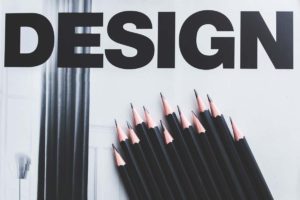Exhibit designers are skilled at solving the many problems that arise when you build a shippable, temporary structure in order to attract, host, and convince a group of buyers walking a crowded trade show floor. It’s a specialized set of skills, and you need a partner who has all of them to be truly successful. Let’s take a closer look at what your Austin trade show exhibit designers really need to know.
1. YOUR END-USER CUSTOMER
The most creative booths create more sales opportunities. That means making a strong connection with the buyer, which in turn depends on a deeper understanding of them. Your designer needs to know what your buyers want, what they fear, how they speak, their demographics, and lots more. Are they risk-averse or innovative? Are they independent or team players?
2. YOUR COMPANY
What are your goals at trade shows? How has your brand evolved, and especially in how it has been presented at trade shows? What are the marketing messages and programs you are sharing in mediums outside of trade shows? The main products your company sells? What makes your products and services better than alternatives? And does that matter much to your customers? What does your company stand for? While asking these questions, a creative exhibit designer will look for clues about the genuine advantages your company offers that can become a key part of your exhibit design.
3. YOUR COMPETITORS
At minimum, your designer needs to know how your competitors stack up against your own company’s offerings, and how you will be compared to them in the minds of your booth visitors. Even better, know what your main competitors are doing at trade shows – their exhibits, activities, and show schedules. Share with your exhibit designer if your competitors are better positioned than you are to win the attention – and business – of attendees who visit both your booth and theirs. For example, some shows are filled with hanging signs, some with double decks, while others have barely any of either – what will your main competitors be doing? You don’t want to be the only one to bring a knife to a gun fight.
4. YOUR INDUSTRY
Knowing the context of your industry gives designers a better chance to succeed. What are the trends affecting your industry, in terms of growth, innovation, technology, legal issues, consolidation and mergers? Is there an unwritten, but commonly followed way of doing business at trade shows that is different than other industries? Does your industry have lots and lots of rookie buyers coming through every year, or are there small group of veteran buyers that wield disproportionate power? Do interactions with attendees usually take 5 to 10 minutes, or more like 30 to 60 minutes? Are booth staffers expected to be dressed formally, casual, or in between?
5. MARKETING & BRANDING

Austin Trade Show Exhibit Designers Have to Know Their Stuff!
Exhibits aren’t furniture, they are marketing tools built to achieve your specific marketing goals. Creative exhibit designers need to understand the implications of your brand positioning, promise, and personality. They must know the various market segments your exhibit will be shown to, and how your marketing messages change for each. They need to know what kinds of words will get the most attention from buyers. And they need to know how other marketing mediums work in tandem with trade shows, such as social media, digital and email marketing, and print.
6. TRADE SHOWS
Exhibit designers should know marketing beyond trade shows, yet it’s essential they understand what makes trade shows unique. Trade shows exhibits are not brochures, nor websites, nor magazine ads, so the amount of information on a trade show display is best kept to fewer, yet larger elements. Trade show exhibits provide a welcome for attendees, a workspace for booth staffers, and a stage for products. A creative exhibit designer understands the scale of images that will be needed to get attention of trade show attendees. Good designers also understand that you will only be successful if you can generate a profitable ROI, so they design your exhibit while also considering the high costs of exhibit shipping, drayage, I&D, and refurbishing.
7. DESIGN
Without understanding the first 6 points, a designer may create a cool looking structure, but utterly fail to drive business results. True designers do their homework about your customers, company, competitors, and industry. Then they apply their design and marketing skills to create a space that facilitates successful attendee/exhibitor interactions in your booth. Creative Austin trade show exhibit designers work with the booth space and budget you have to create to create visual intrigue and marketing clarity. They know how to combine images and text around a three-dimensional object. They are great with architecture, space, ergonomics, color, typography, imagery, order of information, and more.
Ultimately, the problem to solve is to drive business results – awareness, leads, sales, relationships – so the exhibit pays for itself. Partnering with a knowledgeable, skilled Austin trade show exhibit designer like Xtreme Xhibits is best step you can take to solve that problem.


